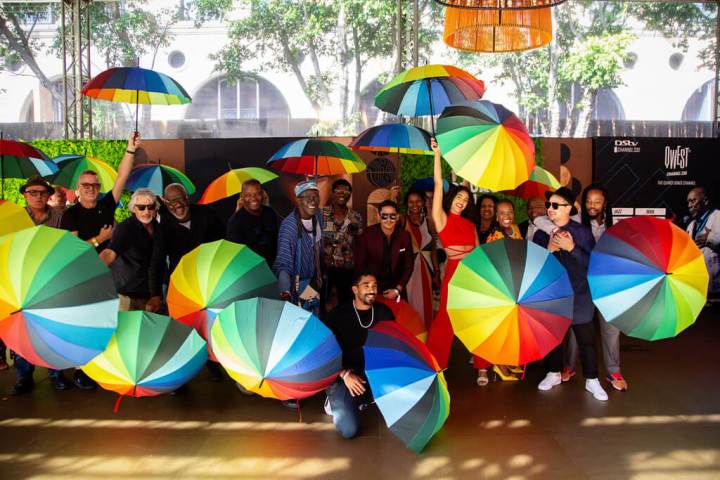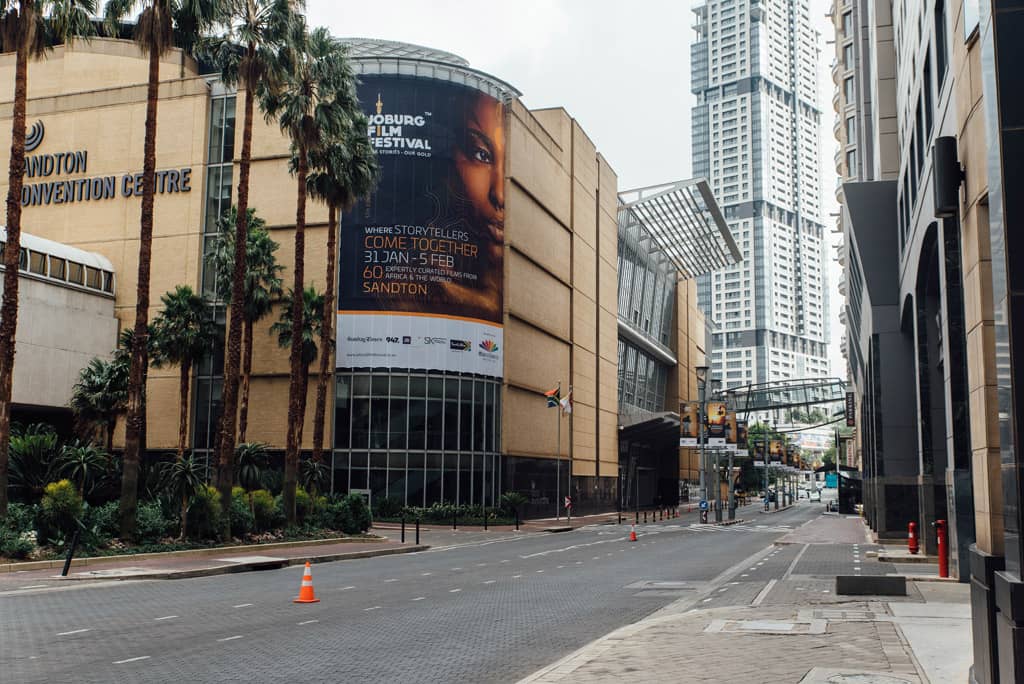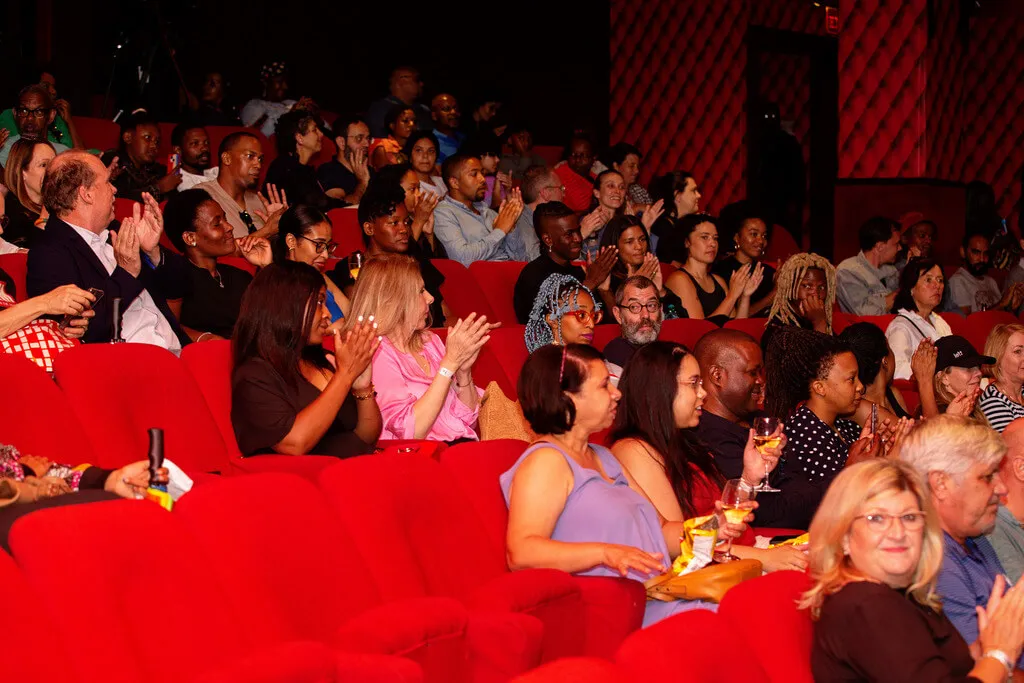OUT & ABOUT
2023 Joburg Film Festival — Bringing an entire universe of new sights and sounds

This year’s festival gave an encouragingly close look at new and classic art from Africa, as well as from further afield.
You’d be forgiven for having missed the Joburg Film Festival this year, as it gave rise to so little media fanfare that this writer only stumbled upon the 2023 event by chance, while checking Ster Kinekor’s website.
It turned out to be a very lucky find because this year’s festival seemed to present a superbly curated selection of movies for Johannesburg audiences.
Independent cinema from just about anywhere could do with a little more attention and care; but it’s African cinema that’s in most dire need of greater recognition, a more energised awareness and higher regard. Filmmakers from the continent bring an entire universe of new sights and sounds, a new vision of light and spirit and music, which the cinema is the poorer for neglecting.
This year’s festival gave an encouragingly close look at new and classic art from Africa, as well as from further afield.
Unfortunately, I couldn’t see many of the new movies chosen for the festival (whether in or out of competition) and my own viewing choices were limited to the handful I could make time for; yet, the experience of those few films proved exquisite.

Outside the 2023 Joburg Film Festival. Image: Joburg Film Festival.

Audiences at the 2023 Joburg Film Festival. Image: Joburg Film Festival.
Black Girl
2023 is the distinguished centennial year of the great Senegalese novelist and filmmaker Ousmane Sembène, whose cinematic debut, Black Girl, was the first movie made by an African to gain serious attention. And that attention for this vital adaptation from one of Sembène’s own short stories is well deserved.
The plot shows a young Senegalese woman, Diouana (Mbissine Thérèse Diop), who arrives in south France, expecting to provide childcare to a young French couple. Instead, relegated to menial cleaning duties, she is met with indignities and abuse and driven to tragic measures. Sembène films in a style that may initially look like impersonal realism, but the drama bears a silent yet impassioned outrage for the historical and ongoing violations of colonialism. In Diouana’s personal desperation, he dramatises a whole nation’s bitter discontent.
After Black Girl, Sembène continued to make movies that give voice to Senegalese women, especially as leading characters who encapsulate cultural and historical narratives. His movies suggest that women’s stories are central to the nation’s stories, that an African revival would necessitate the emancipation of its women. In movies like Black Girl and Sembène’s later dramas Emitaï and Moolaadé, African women resist brutality with a powerful silence, one that both reflects and rebuffs the silence women are consigned to in life.
Black Girl, Emitaï, and Moolaadé are available to stream on Showmax.
Mandabi
Sembène’s 1968 adaptation of his own novel marks another important landmark in cinema history: it’s the first West African feature film predominantly in an African language. The language spoken through most of the movie is Wolof — the widest-used and understood language in Senegal — and the choice of language proves integral to the drama and the political fabric of the movie.
Mandabi follows Dieng (Makhouredia Gueye), a devout and unemployed Muslim man living in Dakar, who lives with his two wives and seven children. He receives a money order from his nephew in Paris, who intends for most of it to go to his own mother, and sets off on the apparently simple task of cashing it. But he is met by a barrage of bureaucracy, corruption, and outright scams, which not only frustrate his aims but converge with frictions at home to throw his entire life into disorder. Creditors hound him and his wives, supposed friends who hear of the money order come begging for alms, local businessmen set their sights on his property, and the Francophone élite dismisses him and others as the unwashed, illiterate, and benighted. Dieng’s troubles build up relentlessly — rather like Adam Sandler’s in Uncut Gems — until a friendly postman extends a hand of comradeship.
Visit Daily Maverick’s home page for more news, analysis and investigations
Sembène’s storytelling is marked by an absorbing classicism, and his story is told with a disarming forthrightness. He shows clear empathy for the people of Dakar’s slums, even as he depicts their transgressions head-on. He closes with a final shot of stark political exhortation, a call to arms against the city’s inequities that is astonishing for its force as well as its simplicity.
Rewind & Play
This fascinating work is a documentary about the making of a documentary. In 1969, the great jazz pianist Thelonious Monk arrived in Paris to end a European tour. Before his evening concert, he agreed to appear on a television interview programme, where he would sit down at a piano in a studio, to answer questions and perform some music.
Recently, the French-Senegalese filmmaker Alain Gomis discovered the rushes from this interview, and edited them into a feature documentary, one that shows the remarkable process of the making of the programme, and throws into harsh relief the casual racism that Monk endured, even as one of the highly regarded musical geniuses of his time.
The interviewer, Henri Renaud, and the producers contrive a bizarre format, where they want it to look like Monk is being interviewed in a casual and intimate context, but they engineer and rehearse questions and answers extensively. Renaud asks a question in French (subtitled in the movie), then tiresomely repeats it in English, for the benefit of Monk. In many of the outtakes, questions are repeated again and again, Monk’s own views are disregarded, and all life and spontaneity are sucked out of the interview.
In an extended moment of stress, Monk mentions an earlier performance at a jazz festival in Paris, where he was hailed as a star, but not paid like one. Renaud instructs the producers to “erase” the remarks; when Monk repeats the comments, Renaud calls them “derogatory” and again asks for them to be erased. Monk gets up from the piano, seeming to walk out of the interview, but Renaud wheedles him back, and dismisses Monk’s complaints.
Gomis shines an important light on the belittling of a mighty black artist. Most of the rest of his film makes space for that art, with gratifyingly long takes of Monk’s thrilling improvisations at the piano.
Touki Bouki
Djibril Diop Mambéty’s 1976 Senegalese classic, Touki Bouki was particularly well attended; perhaps its renown is thanks, in part, to Martin Scorsese, whose World Cinema Foundation restored the movie in 2008 and exhibited it at the Cannes Film Festival.
Mambéty conceived and shot his movies in methods far removed from Ousmane Sembène’s classicism. He approached cinema like the surrealists approached art: images appear before his camera, sometimes without logic, as if materialising straight out of his imagination. The Senegal seen in Touki Bouki couldn’t be captured by any other filmmaker; it’s the Senegal that his characters feel and inhabit; it’s the Senegal that Mambéty probably pictured in his mind his eyes closed.
And yet, there’s still a groundedness to the experiences Mambéty depicts — a tactile immediacy to the scenes he films and welds together. Mory, a cowherd, and Anta, his girlfriend feel tyrannised from all sides in Dakar: a sorceress threatens Mory with disaster unless he repays his debts, family and neighbours plague their relationship with judgements, and university classmates of Anta (a band of professed revolutionary Marxists) treat Mory to a bout of revolutionary violence, for his supposed lack of support for their cause. Mory and Anta dream of leaving Dakar and heading to Paris, and much of the movie follows their schemes for escape.
Mambéty’s story is of the concern of the century: the conflicts and difficulties of Africans propelling from traditional ways of living into the modern world. Their fractured reality is aptly symbolised in Mory’s cow-horned motorcycle.
Touki Bouki depicts another large conflict, one even more universal: the pull on young people everywhere between their bonds to their communities and their homes, and their striving for individual fulfilment. Mambéty films these crises from the frontlines, as his own artistry embodies both respect for tradition and explosive originality, both regard for his home city and nation and a furious declaration of individual accomplishment. Some visions can come from nowhere but from Africa. DM/ ML
Mambéty’s later film Hyenas is available to stream on Showmax.















 Become an Insider
Become an Insider
Comments - Please login in order to comment.